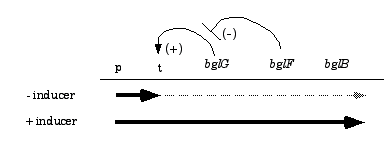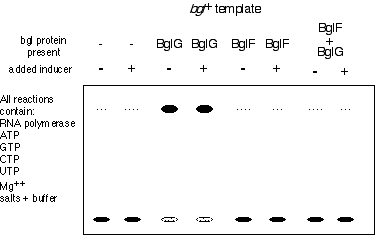
(1) 26 pts. Answer TRUE or FALSE. If the statements are true, explain or give a supporting example. If the statements are false, either correct the statement or give a counter example.
a) Control by regulated transcription termination is necessarily unique to prokaryotes.
b) In humans, reverse transcriptase is found only in individuals infected with retroviruses.
c) i) Most oncogenic retroviruses require a helper virus to propagate.
ii) Oncogenic retroviruses carrying mutations in the env gene require a helper virus
to cause tumors.
d) All genes that affect dorsal/ventral patterning in Drosophila are maternal effect genes.
e) In order for a two-hybrid system based on the lexA operator and DNA binding domain and the GAL4 activation domain to work, the yeast strain must contain a GAL80- mutation.
f) ES cells from a black (B/B) strain of mice are made mutant for one copy of the IRAK locus and injected into a blastocyst derived from brown (b/b) colored mice. If this blastocyst develops into a mouse and the mouse is crossed to a brown mouse, one-quarter of the progeny will be black-colored and heterozygous for the IRAK mutation.
2) 24 pts. Short answer section.
(a) Offer an explanation for why retro-elements generally account for a larger fraction of the genome than do transposable elements akin to P elements or the Ac/Ds elements of maize.
(b) Cancers can be induced by exposure to certain chemicals. Most such carcinogens are mutagens, however, some chemical carcinogens seem to cause cancer without inducing mutations. Briefly offer explanations for why mutagens may induce tumors and for how non-mutagenic carcinogens might act.
(c) Partial diploids of E. coli that are IS/I+ are uninducible, whereas I-d/I+ partial diploids are constitutive. What do you think would be the phenotype of an IS/I-d strain? Explain your answer.
(d). Draw the result of the PaJaMo experiment in the left graph. On the right graph, draw the predicted curve if the donor strain carried a lacIQ mutation. Genotypes are identical expect for the indicated difference. Briefly explain your answers.
3
) 12 pts. One way that the spätzle (spz) gene product was identified as the Toll ligand in the Drosophila D/V patterning pathway, was by purifying active Spz protein and injecting it into the perivitelline space between the egg shell and the embryo.(a) Assuming that Spz protein remained at the site of injection, and that the injected embryos were derived from mothers mutant for spz, what would you expect the D/V phenotype of the injected embryos to be? (Answer for the embryo as a whole and for the site of injection.)
(b) Would you expect to find active Spz in easter- mutants? How about dorsal- mutants? Explain.
4) 38 pts. In E. coli utilization of ß-glucosides such as salicin requires three genes encoded in a single operon: bglG, bglF, and bglB. The bglB gene encodes an enzyme needed to metablize ß-glucosides--it has no regulatory role.
The bgl operon is normally expressed at very low levels, but it can be induced by ß-glucosides, all of which act as true inducers. A transcription terminator is located between the bgl-promoter and the bglG gene. Under non-inducing conditions most transcripts stop prior to reaching bglG. Under inducing conditions most transcripts read through the terminator. The following model for bgl regulation has been developed:

bglG encodes a transcription anti-terminator. The bglG protein is active in the presence of inducer and allows read through of the bgl "t" region.
bglF encodes a dual-function protein. It is a membrane protein that serves as the ß-glucoside transporter, and as a negative regulator of bgl operon expression. When inducing sugars are present bglF brings them into the cell, phosphorylating them as they enter the cytoplasm. In the absence of inducer, bglF phosphorylates the bglG protein, thereby inhibiting its transcription anti-termination activity.

a) 10 pts. Fill in the following table stating the predicted Bgl phenotypes and whether the bgl operon would be induced, inducible, uninducible, or constitutive. Assume the mutations are recessive nulls.
|
Genotype |
inducer |
Bgl Phenotype |
||
|
absent |
present |
|||
|
wild-type |
||||
|
bglG- |
||||
|
bglF- |
||||
|
bglB- |
||||
b) 8 pts. The model predicts that it should be possible to isolate additional types of bgl regulatory mutations. What sort of additional mutation(s) should you be able to isolate? State phenotype(s) and whether they would be dominant or recessive. Briefly explain.
c) 8pts. Based on your answers to parts a) and b), suggest additional genetic tests of the model utilizing double mutants. Briefly state the predicted epistatic relationships and their meaning (i.e. what suppresses what). You do not need to consider all possible combinations--only present those that provide informative tests.
d) 12 pts. In vitro experiments were performed to test the model. Using a bgl+ template and pure BglG, BglF, and RNA polymerase holoenzyme proteins only, the following results were obtained  (as assayed by Northern blot.)
(as assayed by Northern blot.)
i) The results appear not to be entirely consistent with the proposed model for bgl regulation. Which data are consistent and which are problematic? Why?
ii) Can you think of a way to explain the in vitro results without discarding the model?
Propose a simple in vitro test of your explanation. (You may use any mutant protein or template and/or any "reasonable" biochemical reagent(s) you can imagine.)
Extra credit 5 pts.
You have isolated an E. coli lac mutant with the following properties. The lac operon is highly expressed in the presence of IPTG or several naturally occurring B-galactosides but is off in the presence of lactose. This mutation is recessive in diploid analysis. Which gene is the best candidate to be mutated in this strain and what is the nature of the mutation?